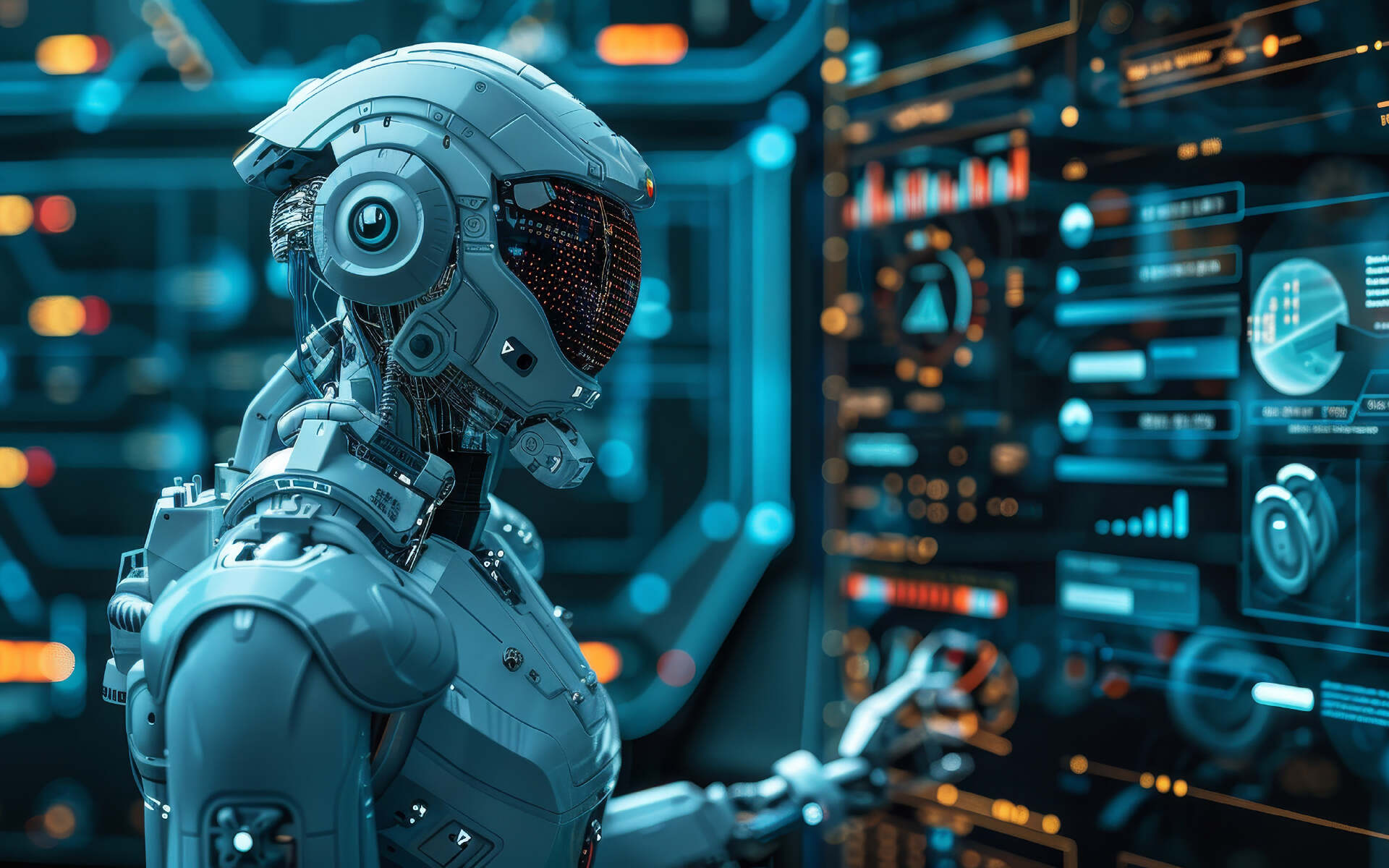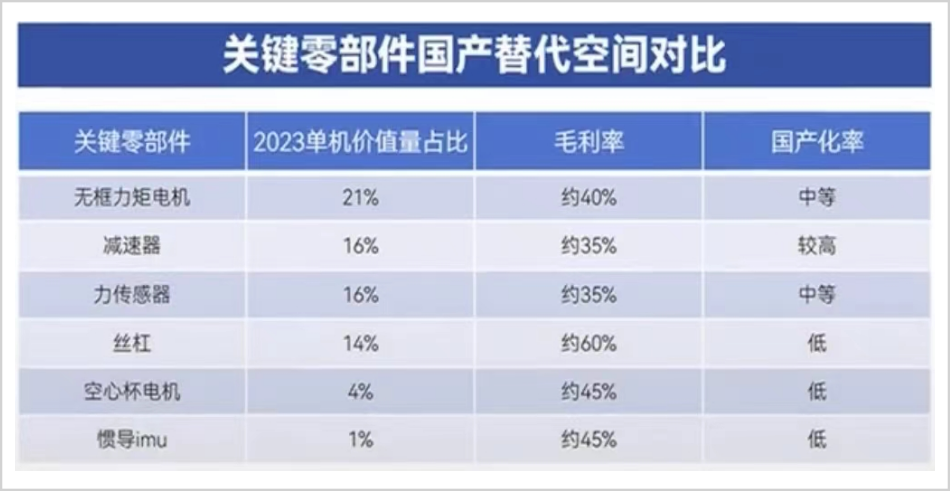A Major Turning Point for Humanoid Robots
![]() 07/30 2025
07/30 2025
![]() 513
513

Following Zhiyuan's 2.1 billion investment in SWANCOR, Unitree Technology officially commenced IPO listing counseling on July 18th, aiming to list on the A-share market within the year.
The significant capital movements by key players have reignited the humanoid robot market, which has seen gains exceeding 11% since July, nearing its yearly high.
The trend of humanoid robots is on the rise, but who will emerge as the primary beneficiary?
[The Arrival of the Robot Turning Point]
2025 marks the inaugural year of mass production for humanoid robots.
In China, leading firms such as Zhiyuan, Unitree, UBTECH, and Fourier are proceeding with large-scale production as scheduled. Zhiyuan's Shanghai Lingang factory boasts a monthly production capacity of up to 1,000 units, while Unitree aims to produce over 5,000 units in 2025.
Overseas, Tesla plans to manufacture 10,000 Optimus units in 2025, 1X Technologies anticipates mass-producing thousands of units, and Figure AI envisions producing 100,000 units over the next four years.
This progression towards mass production is inseparable from policy support and capital assistance. In October 2023, the Ministry of Industry and Information Technology issued the "Guidance on the Development of the Humanoid Robot Industry," planning to achieve breakthroughs in key technologies by 2025 to ensure a reliable supply of core components.
Furthermore, the guidance explicitly states that humanoid robots are expected to follow in the footsteps of computers, smartphones, new energy, and new energy vehicles as disruptive products, becoming a crucial engine for future economic growth. The emergence of these latter three products has historically heralded monumental industrial and investment opportunities.
This planning and tone suggest immense prospects and opportunities in the humanoid robot sector, sparking a financing boom in the primary market with the emergence of numerous new players. Against this backdrop, the development of humanoid robots is thriving, with rapid advancements in software and hardware technologies laying the groundwork for mass production in 2025.
This inaugural year of mass production also marks the first year of commercialization.
Before July 2025, humanoid robot orders were primarily concentrated in universities, research institutions, and retail markets, with individual procurements reaching tens of millions.
Post-July, two major orders effectively established the commercialization turning point. Zhiyuan and Unitree won the bidding for China Mobile's humanoid biped robot OEM service procurement project, totaling 124 million yuan, marking the first billion-yuan order in the domestic humanoid robot market. Subsequently, UBTECH secured a 90.51 million yuan robot equipment procurement project from Miyi (Shanghai) Automotive Technology Co., Ltd.
The influx of these large orders, totaling over 200 million yuan, vastly surpasses the previous industry's annual order scale, dispelling doubts about the commercialization capabilities of humanoid robots in the capital market. This has also served as the catalyst for the recent surge in the humanoid robot sector.
[The Race to Secure Market Share Is Underway]
The humanoid robot industry is ascending, with an increasing number of players vying for a share of this trillion-yuan potential market.
Currently, players in the humanoid robot industry are primarily categorized into four groups. First, new robot forces, including UBTECH, Unitree, and Zhiyuan. Among them, UBTECH, founded in 2012, has since become an industry talent supplier base.
Second, cross-border transformation forces from industrial and service robots. Notable representatives include Topstar and Efort, which have been competing in the industrial robot sector. However, with sluggish industry demand and intensifying competition, their performance growth and profitability have been significantly impacted.
Third, technology giant forces led by Huawei. On November 15, 2024, Huawei signed cooperation agreements with 16 enterprises, including LEJU Robotics, Topstar, Efort, and Zowee, initiating the development of the China Southern Robotics Alliance. Additionally, major players such as Baidu and iFLYTEK will also focus on robot AI.
Fourth, new energy vehicle forces, including Xiaomi, XPeng, and Tesla. One of the primary drivers for their entry into the robot industry is the desire to synergize with their existing automotive businesses. In the coming years, one of the most likely industrial scenarios for large-scale robot deployment will be in automobile manufacturing. Implementing robots in their own factories can significantly reduce automobile manufacturing costs and diversify businesses.
The competitive landscape among these four forces has already taken shape, and intense competition is inevitable. So, who will be able to carve out a path and establish a firm foothold in the market?
From a market capitalization perspective, new forces led by Unitree and technology giant forces led by Huawei are most likely to emerge as leaders. In fact, the A-share market has primarily engaged in multiple rounds of speculation around the concept stocks associated with these two forces.
In 2016, Wang Xingxing left DJI to found Unitree Technology. Within a year, he researched and developed hardware technologies such as motors and main controllers, subsequently launching the Laikago robot dog. With continuous iterations and upgrades, new products like Alien Go, Unitree A1, Unitree Go1, B1, GO2, B2, and B2-W were introduced.
After several years of competition, Unitree has become the DJI of the robot dog field – in 2023, it accounted for 70% of global robot dog sales and 40% of the total market size.
In 2023, with ChatGPT igniting the rapid development of AI, Unitree swiftly entered the humanoid robot market, successively releasing H1, G1, and R1 products. Given that robot dog and humanoid robot technologies share similar origins, Unitree has smoothly transferred the technology accumulated in the former field.
During the 2025 CCTV Spring Festival Gala, the H1 robot made a high-profile debut and became an overnight sensation. Therefore, whether from the perspective of hardware technology or branding, Unitree has established itself as a first-tier player in China and globally, virtually ensuring its future market presence.
Apart from Unitree, Huawei's official announcement of its involvement in robots has also given the industry a significant boost. In fact, as early as seven years ago, Huawei began conducting technological research and development around "robots + AI," amassing numerous patents in areas such as human-computer dialogue, robot arms, and obstacle avoidance systems.
Moreover, Huawei's technology in AI chips, operating systems, and large models ranks among the best, giving the market high hopes for its breakthroughs in robot AI decision-making and general large models. This is also one of the core logics behind the speculation in the A-share market around the Huawei robot concept.
Unitree excels in hardware, while Huawei excels in software. Both have a high probability of emerging as leaders in the wave of humanoid robots.
[Who Will Be the Big Winner?]
Currently, there are no successful listings of humanoid robot manufacturers on the A-share market, but the capital market has engaged in multiple rounds of speculation around potential core component manufacturers at an early stage.
In the industrial chain, reducers, servo systems, and controllers account for 70% of the cost. This further breaks down into lead screws, torque sensors, frameless/coreless motors, harmonic/planetary reducers, and operating systems, among others.
Among these, lead screws are core components with high technical barriers, low localization rates, and few players, making them one of the most opportune areas.

▲Source: SOOCHOO
Lead screws have stringent requirements for precision and craftsmanship in design technology, manufacturing and processing, materials and heat treatment, testing, and other aspects, making them the most technically challenging. Consequently, their gross profit margin exceeds 60%, significantly higher than that of components like motors, reducers, and force sensors.
Previously, the global market was dominated by giants such as GAS from Switzerland, ROLLVIS from Sweden, GMS from the United States, and NSK from Japan. Chinese manufacturers, primarily Hiwin Technology, mostly occupy the mid-to-low-end market.
Starting in 2023, listed companies like Shuanglin, Wuzhou Xinchun, and Best have announced their involvement in lead screw research and development, making certain progress. These companies have become the focal point of speculation in the A-share robot sector, with some experiencing mythical growth of over ten times in a year.
Apart from lead screws, suppliers with actuator assembly capabilities are another major area of market attention. An actuator assembly integrates components like motors, lead screws, torque sensors, and bearings, supplying them as a whole to downstream robot manufacturers, akin to Tier 1 suppliers in the new energy vehicle industry. Compared to enterprises that only produce individual components, their performance and market space are likely to be much larger.
Currently, besides Sanhua Intelligent Controls and Top Group transforming and entering the field of humanoid robot assemblers, Zhenyu Technology and Siling Co., Ltd. are also making strides.
From a market capitalization perspective, to become a winner in the robot component field, one often needs to have two main support points. First, it is essential to establish a strong bond with downstream core body manufacturers. As the market concentration of downstream robots continues to increase, partnering with potential future leaders can ensure future performance growth.
Second, the original business must be robust. Currently, most suppliers originate from the new energy vehicle industry, and their own businesses must exhibit sustained growth. Firstly, the market will offer generous valuations. Secondly, it can continuously invest and provide funding for new robot businesses, making products competitive.
In summary, with the establishment of the commercialization turning point for humanoid robots, downstream body manufacturers will accelerate their efforts to secure market share. For midstream and upstream suppliers, the window to enter the industrial division system will gradually close. It will become increasingly evident which enterprises can become established Tier 1 and Tier 2 suppliers like those in the new energy vehicle industry chain. However, regardless, suppliers of lead screws and actuator assemblies to downstream leading manufacturers will undoubtedly be among the major winners in this wave.
Disclaimer
The content related to listed companies in this article is based on the author's personal analysis and judgment, derived from information disclosed by listed companies in accordance with legal obligations (including but not limited to interim announcements, periodic reports, and official interaction platforms). The information or opinions in the article do not constitute any investment or other business advice, and Market Capitalization Observation does not bear any responsibility for any actions taken as a result of adopting this article.
——END——








